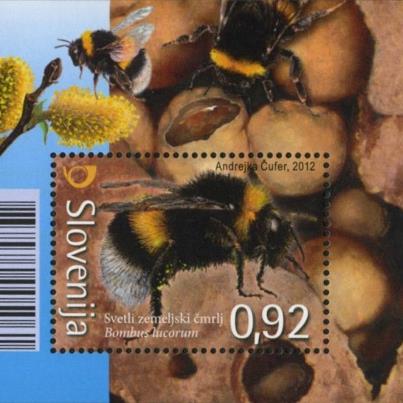Researchers with the Canadian Pollination Initiative (NSERC-CANPOLIN) mined numerous insect collections in Canada and the United States looking for information on the distribution and abundance of 21 eastern species of bumble bees. "It is really difficult to know if a species is in trouble unless you have good historical data for comparison. This is the first time data gathered from historical collections has been used to assess the current status of Nearctic bees across their entire native range," says Sheila Colla, a recent PhD graduate from York University who led the study. The study was based on 44,797 bee specimens collected between 1864 and 2009. Researchers used both taxonomic and geographic data found in collection records to measure the persistence and relative abundance of each species across the full range of their distribution. Of the 11 species found to be in decline, four are deemed "vulnerable", six are considered "endangered" and one is "critically endangered".
The bees most at risk tend to share similar characteristics. The most severely endangered species is a cuckoo bee, Bombus variabilis, which lays its eggs in the nests of other bumble bees to be raised by the host. Three other bee species in decline were also cuckoo bees. Other bee species most at risk tend to be long-tongued species with queens that emerge late in the season. The researchers also noted that species with smaller historical ranges were less likely to persist. "There is still a lot of work to be done to fully understand the threats to bee populations, and what makes a particular species vulnerable to decline. But in the meantime, protecting the habitat of high risk populations should be a top priority for conservation efforts," says Colla.
More information: Colla, S.R., F. Gadallah, L. Richardson, D. Wagner and L. Gall. 2012. Assessing declines in North American bumble bees (Bombus spp.) using museum specimens. Biodiversity and Conservation Biology (published online: DOI 10.1007/s10531-012-0383-2 )
Read more at: http://phys.org/news/2012-10-secrets-museum-historical-insect-reveal.ht…

- Login om te reageren
